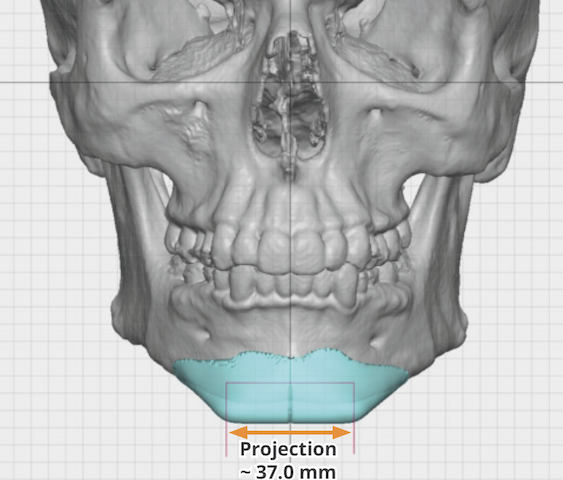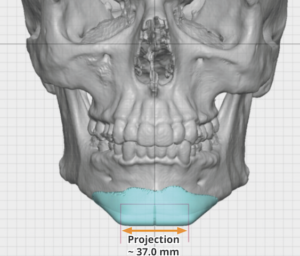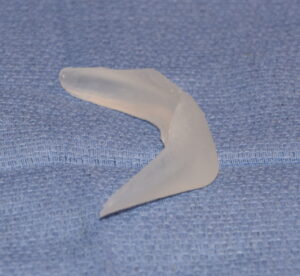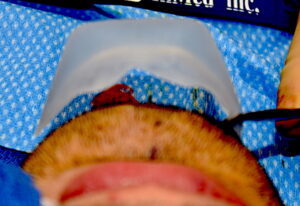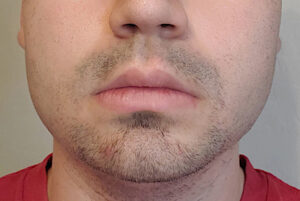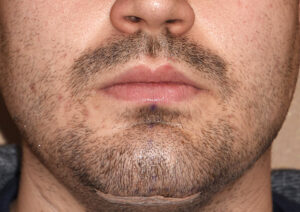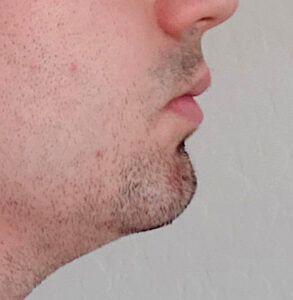Background: Chin implants are available in three different material compositons, over a dozen different styles with numerous sizes for each style. With such a large number of chin implant options one would think that just about every chin augmentation dimensional need can be met by an off-the-shelf implant.
But the vast majority of the many chin implant options largely create slightly different shapes in horizontal augmentation only. Thus the seemingly large number of chin implant options are not as all encompassing as they seem. When it comes to vertical lengthening and width increase needs the number of standard chin implant options to do so are very few.
The role of custom chin implants is in its ability to create combinations of dimensional changes that standard implants do not. They also have the ability to have posterior extensions to provide better blending into the rest of the jaw. They are useful when bony chin asymmetries exists and as a replacement for an unsatisfactory standard chin implant result.
Case Study: This male had no prior chin surgery but he know he needed specific types of dimensional changes for a chin implant augmentation. (vertical lengthening and square chin) His goal was to lengthen his lower face to help change the shape of his rounder face.
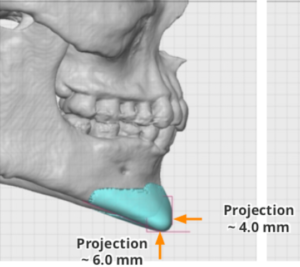
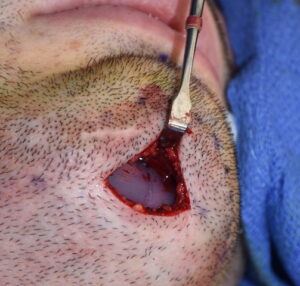
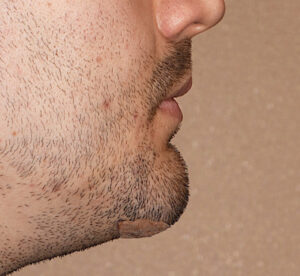
To this patient’s credit he recognized early on that only a custom implant approach would work for his specific chin augmentation needs. Too often surgeons try to make a standard chin implant work without careful consideration of what chin dimensional changes would be aesthetically best for the patient’s face. Failure to recognize a vertically short chin is the most overlooked dimensional need. Even when recognized trying to take a standard chin implant and position it lower on the chin has its limitations.
Case Highlights:
1) Custom chin implants are indicated when vertical and width augmentation changes are needed which are not supplied by standard chin implants.
2) A submental incision is usually the best placement approach particularly when the custom chin implant has a significant vertical lengthening component.
3) When a custom implant has both a horizontal and vertical augmentation increase, the numerical combination should not be greater than in the 10 to 12mm range.
Dr. Barry Eppley
Indianapolis, Indiana

